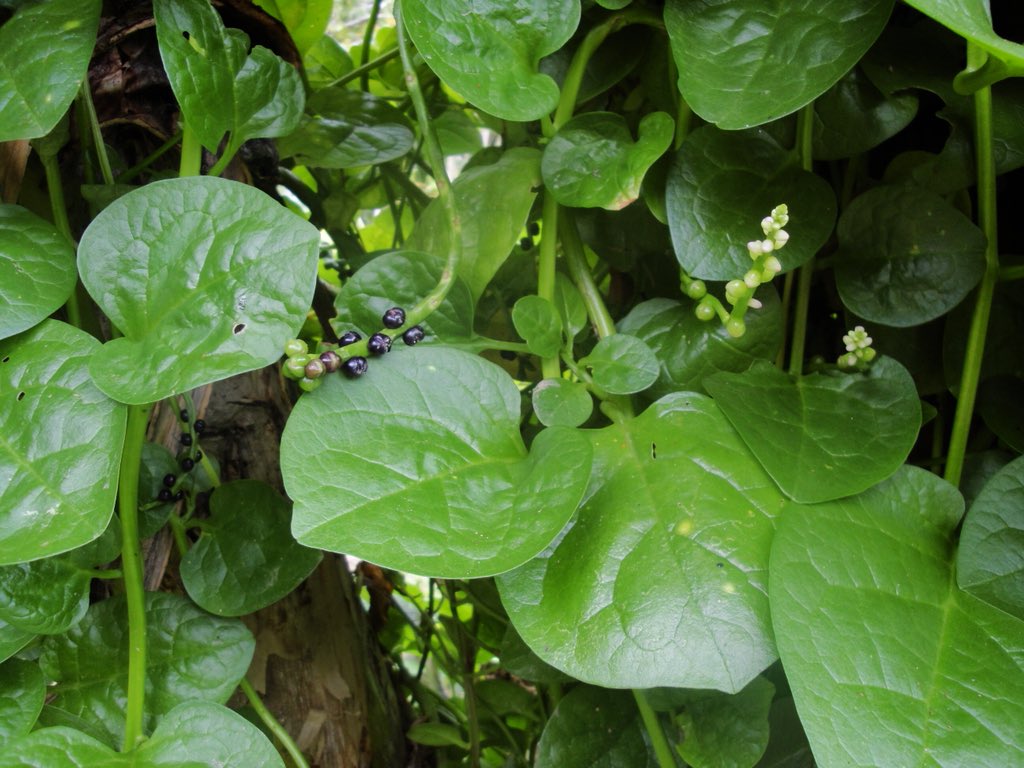In previous issues, we discussed the value of indigenous and ancient food plants of Africa that can provide essential nutrition that is lacking from ‘modern’ food plants that are presently cultivated in many African countries.
Even though there may be enough food to keep the continent’s communities from starving, modern vegetables do not provide sufficient nutrition to keep people healthy. Malnutrition in pregnant mothers causes sickly babies who are not strong enough to fight disease, stunted physical growth and mental slowness in young children, and obesity in adults. Although they may have enough food, these foods – especially fast foods that are sold at street stalls – provide a lot of carbohydrates (starch), but not enough protein.
In the following issues, we shall look at ten neglected and underutilised ancient plants that are brimming with nutrition and are easy to grow in a backyard garden or on a small-scale farm.
These ten plants include leafy vegetables (slender leaf and malabar spinach), edible leaves and pods (cowpeas), beans (marama, lablab and bambara), roots (jute mallow) and fruit (horned melon).
Slender leaf (Crotalaria brevidens and ochroleuca)
Slender leaf, which is also known as rattlepod, rattle pea, or Ethiopian rattlebox, is a tropical legume. It is native to tropical Africa and occurs from northern Nigeria, eastwards towards Ethiopia and southwards towards the southern parts of Tanzania. It is still cultivated in these East African countries, as well as in Sudan, Kenya, and Uganda. It is also to some extent used in West Africa.
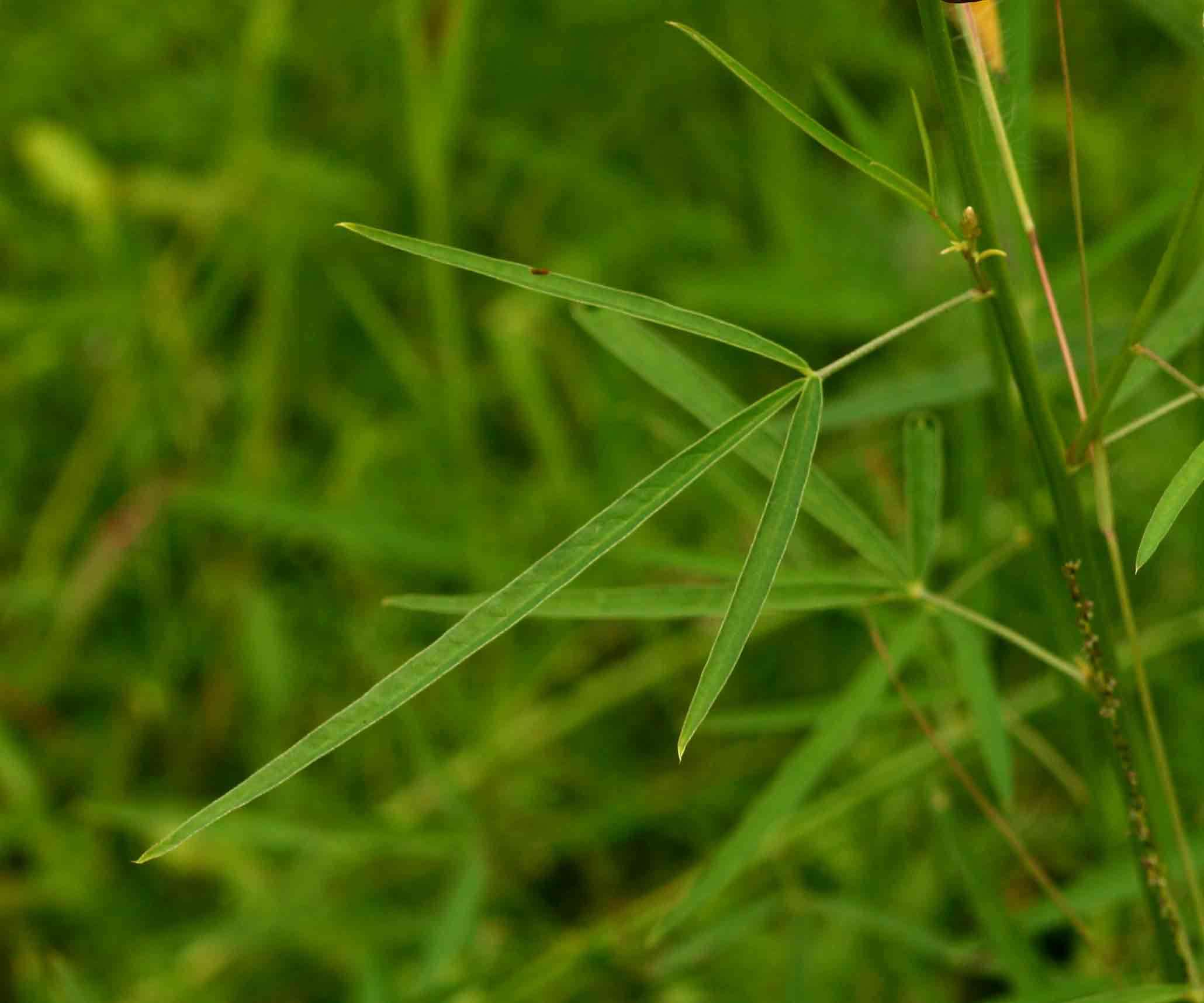
Slender leaf (Crotalaria ochroleuca). (Image source: eol.org)
From its East African origins, the plant was also widely distributed to Mediterranean countries, the West Indies, and the Americas.
A market survey in western Kenya showed that the plant was one of the top ten priority African indigenous vegetables in the region.
The plant grows in grasslands, deciduous woodlands, and bushlands, as well as seasonally swampy grasslands, and sometimes on termite mounds. It also grows naturally on cultivated land, in clearings of highland dry forests, and along roads.
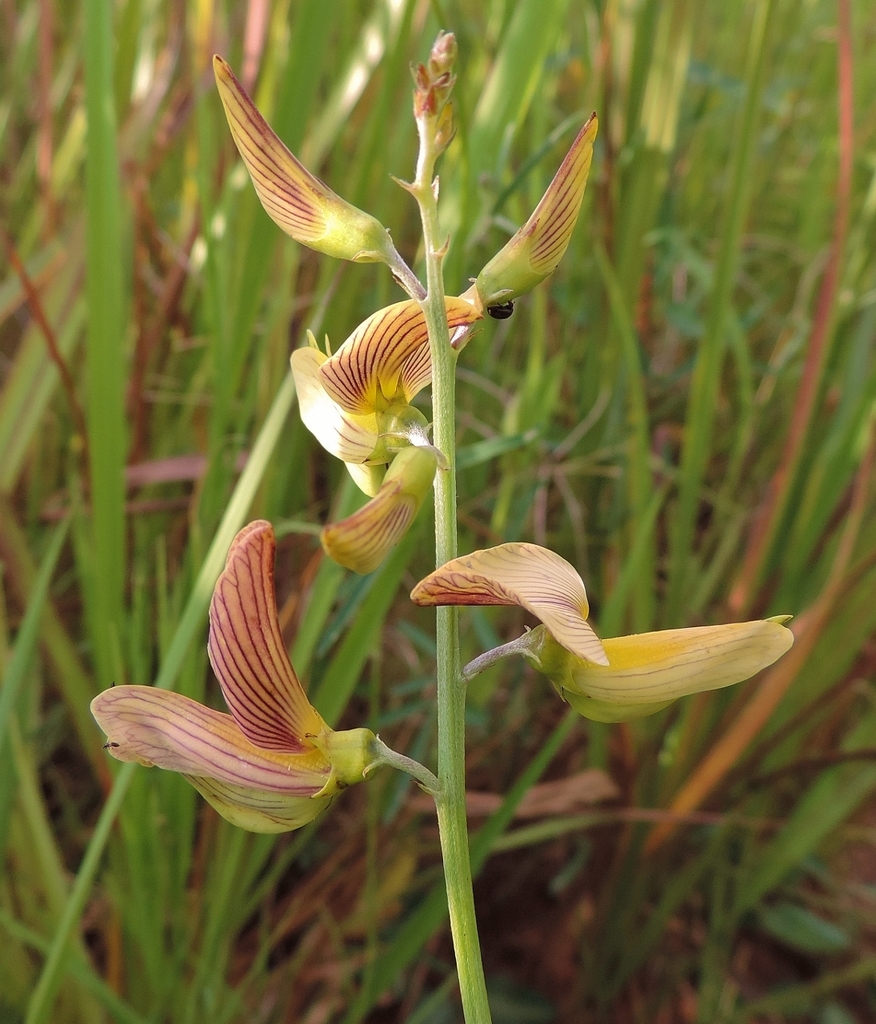
(Image source: Janet Machuka , Twitter)
The young leaves and shoots are eaten as a leafy vegetable and can be boiled, fried, or used as a potherb in stews and soups to provide nutritious greens and flavour.
Because of the bitter taste of brevidens, the younger generation may prefer the close relative Crotalaria ochroleuca, also known as rattlepod. Brevidens grows about 210 cm high, while ochroleuca grows up to 250 cm tall.
Cultivation
The seeds of the slender leaf can be scattered freely or planted in rows 30 cm apart. After six weeks, the seedlings need to be thinned out to 15 to 20 cm apart.
There are several ways of harvesting the plant. It can either be uprooted as a whole and the leaves used immediately, as they only stay fresh for a day.
The leaves can also be harvested from the growing plant, which will continue to grow another eight weeks until the plant starts flowering.
Also, after eight weeks the main shoot can be cut off 10 to 15 cm above the ground to allow new shoots to grow. The leaves on these new shoots will be ready to pick after two weeks.
The leaf yield is about ten tonnes of green matter per hectare. The leaves can be harvested up to fifteen times for four months if they are picked every two weeks. During the dry season, the plant stops growing and must be uprooted.
Nutritional value
Slender leaf is one of the important African indigenous vegetables as the edible young leaves and shoots contribute 100% of the daily dietary requirement for vitamin A, vitamin C, iron, calcium, as well as 40% of proteins per 100 g of the fresh weight.
Medicinal value
Slender leaf is used to treat an upset stomach and malaria.
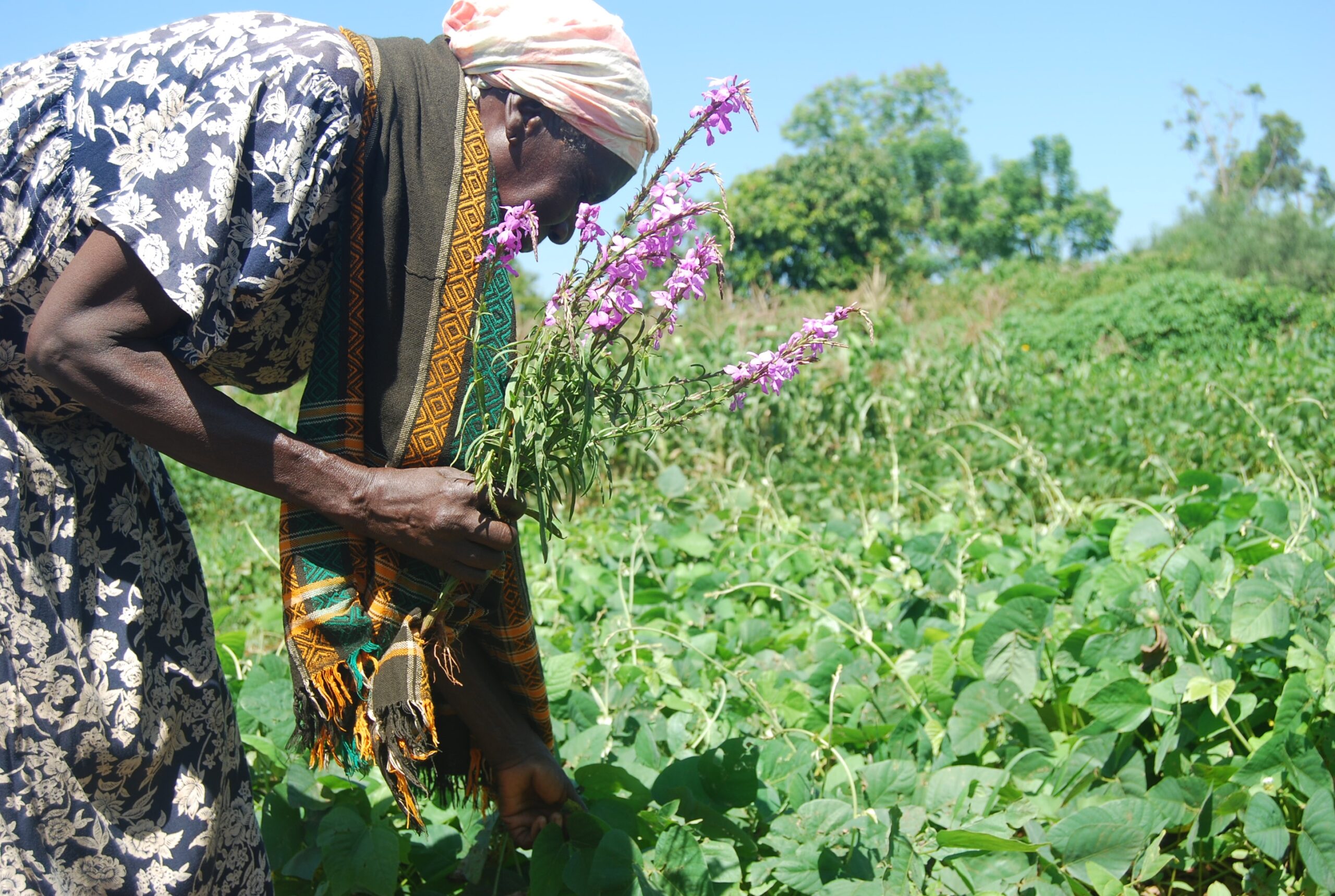
It has agricultural advantages as it can produce seed under tropical conditions and drought. It grows well even when the soil is nitrogen poor, as it can fix atmospheric nitrogen.
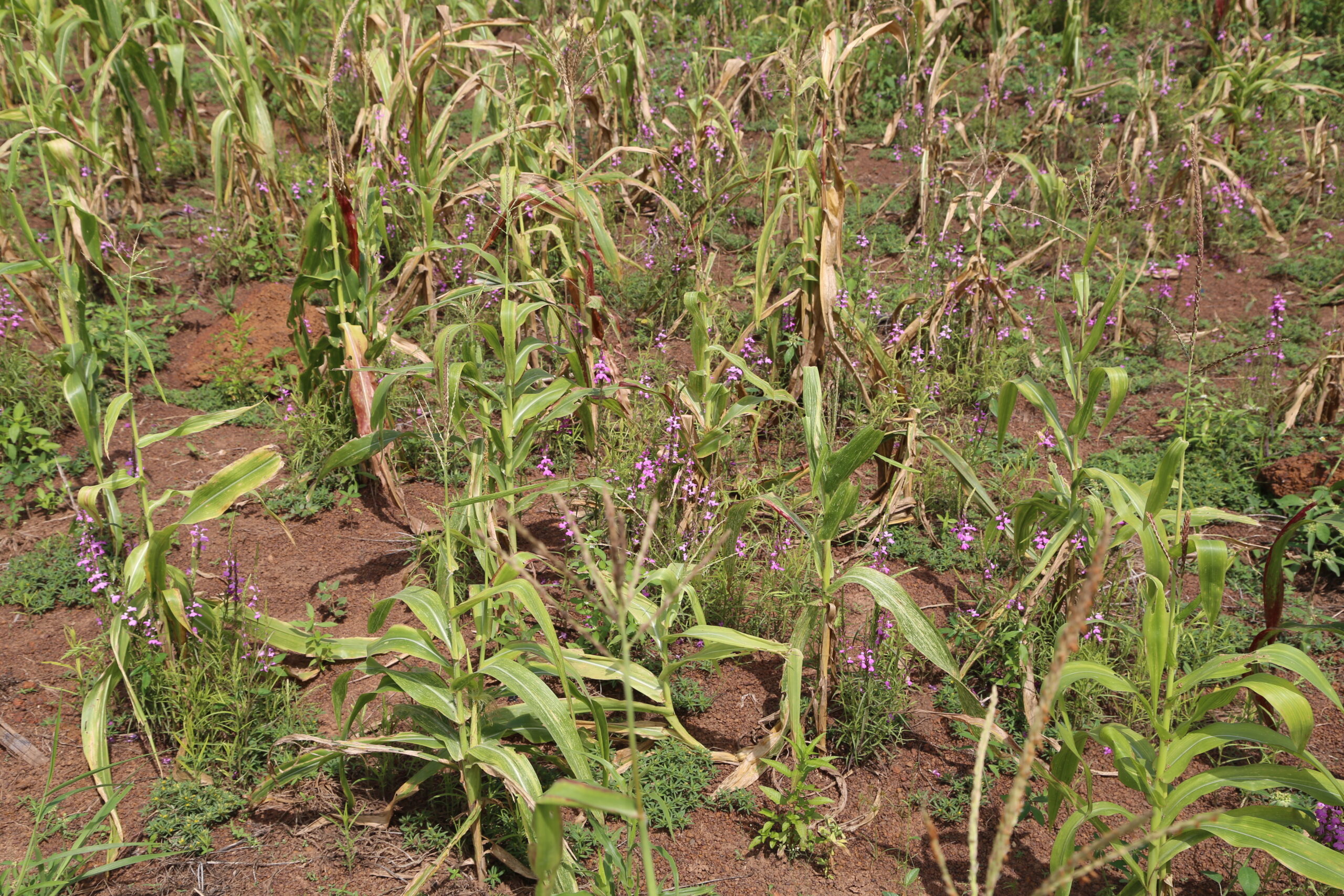
It is a suitable intercrop for finger millet, as it can be used as green manure. It has also been used as a fodder crop. The plant can be used to curb the development of the striga weed (Striga hermonthica), an obnoxious cereal crop weed.
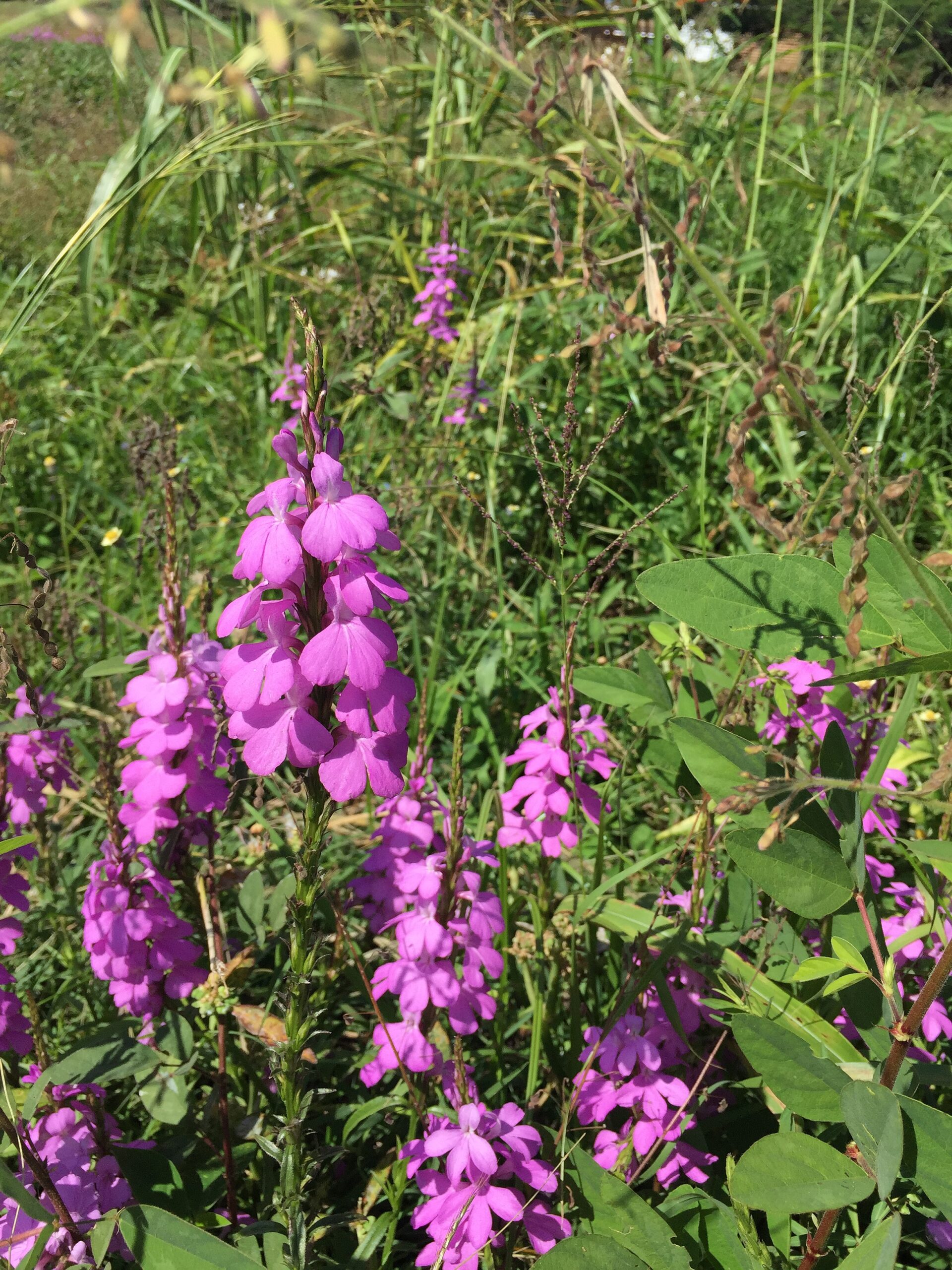
Striga weed (Striga hermonthica), an obnoxious cereal crop weed. (Image source: commons.wikimedia.org)
Farmers usually harvest their own seeds, which can be stored up to three years. Research has shown a germination success of more than 90%, which is better than other leafy greens in Africa.
Although slender leaf is one of the most promising indigenous vegetables in Kenya, the potential has not yet been fully exploited. Despite the high nutritional and economic value, it has been neglected by researchers and farmers, who have concentrated on exotic and already improved vegetables.
Malabar spinach (Basella alba)
Malabar spinach is a perennial vine that belongs to the family Basellaceae. It is widely used as a leafy green vegetable with a green stem, or a reddish-purple stem in the Rubra variety.
The plant grows in tropical Africa and Asia. It is native plant of the Indian subcontinent, Southeast Asia, and New Guinea, and has also been used for ages in Brazil, Belize, Colombia, the Philippines, the West Indies, Fiji, and French Polynesia.
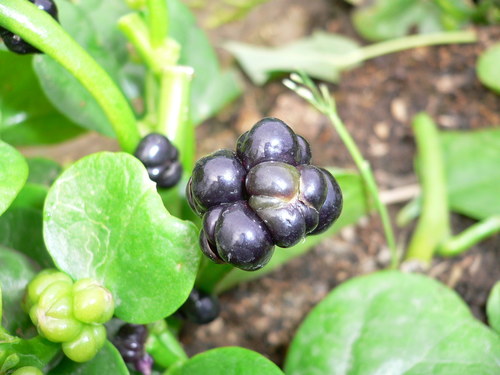
Malabar spinach fruit sap is used as a food colouring. (mage source: inaturalist.org)
Nutritional value
The leaves and stem tips are eaten raw or cooked, while an infusion of the leaves is used as a tea substitute. The fruit sap is used as a food colouring in pastries and sweets.
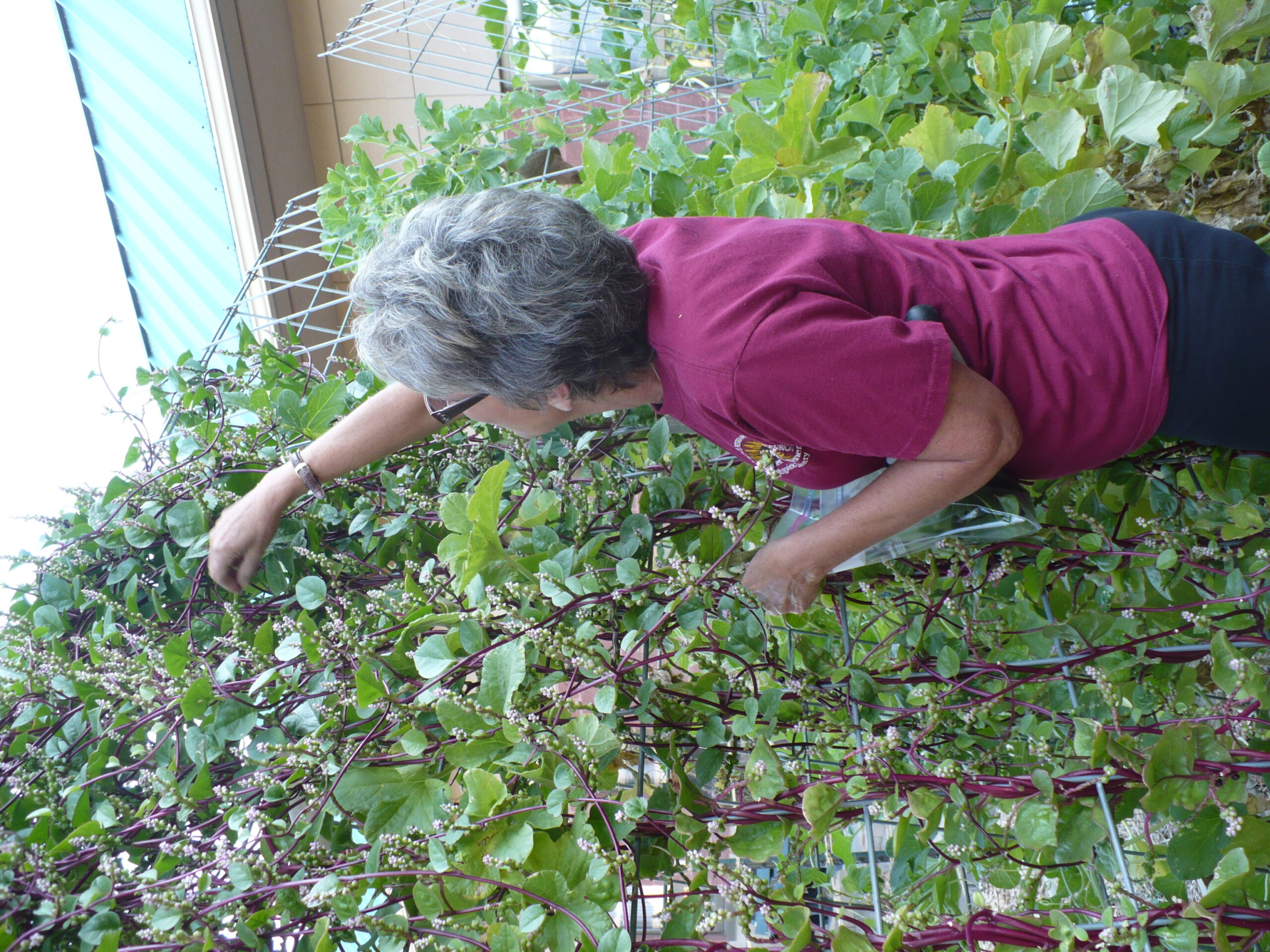
The plant has a high protein content compared to the low calories it contains. It is also high in vitamins A and C, iron, and calcium. It is a good vegetarian protein option and great for health-conscious people.
Medicinal value
The plant has gastro-protective, anti-inflammatory and wound-healing activity. It is used for healing ulcers and a decoction is a safe laxative for pregnant women and children. It is also reported to improve testosterone levels in males, thus boosting libido.
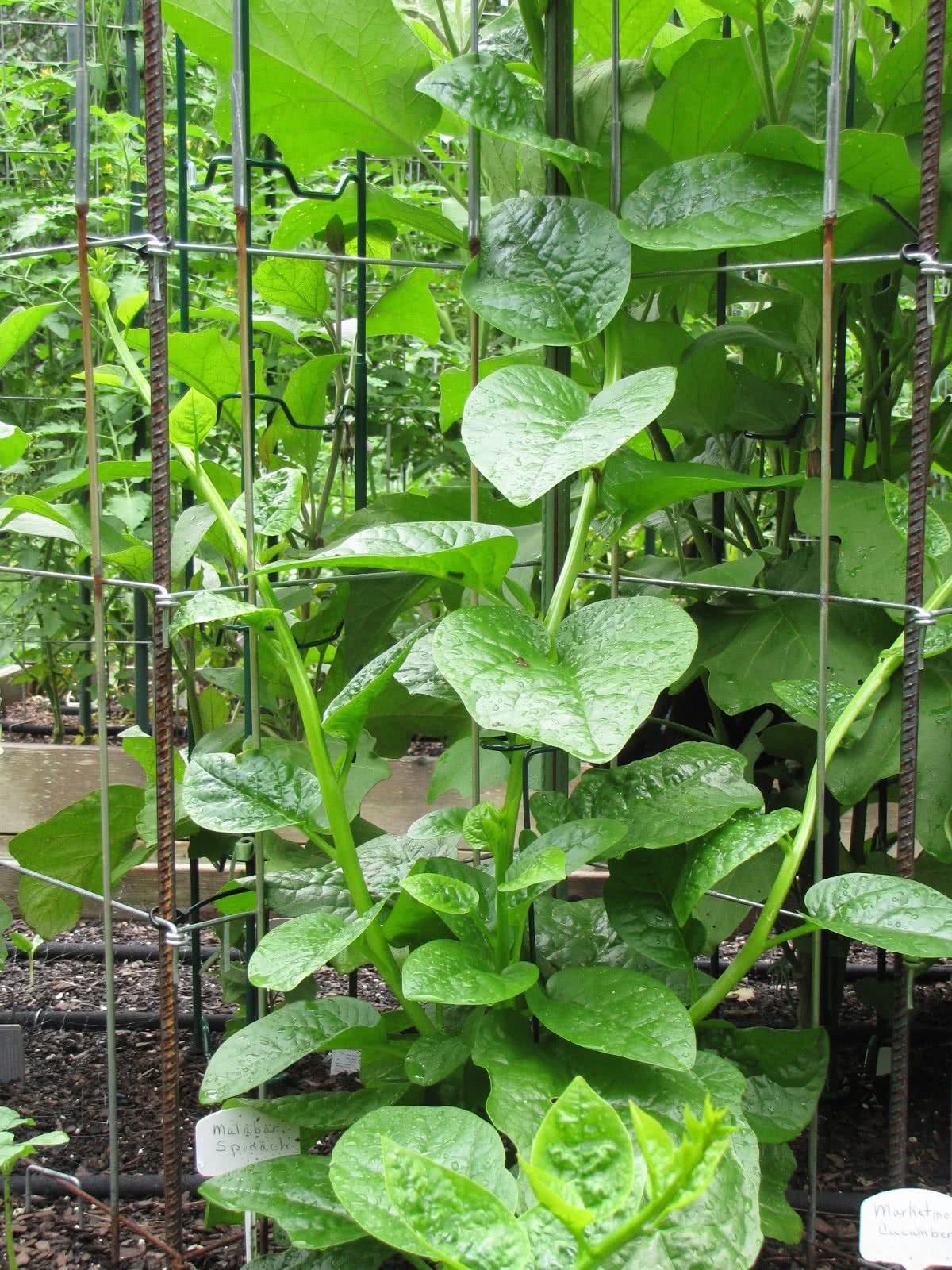
Cultivation guidelines
This spinach differs from other spinach plants because it is a perennial, climbing vegetable that keeps on growing as long as it is taken care of.
It grows all year long and loves warm weather, unlike conventional spinach that grows new shoots on the ground and prefers cooler weather. A sheltered, sunny spot is ideal, as it is vulnerable to frost. It requires a minimum daytime temperature of 15 ° Celsius, but can tolerate low night temperatures that sometimes fall below 10 ° Celsius.
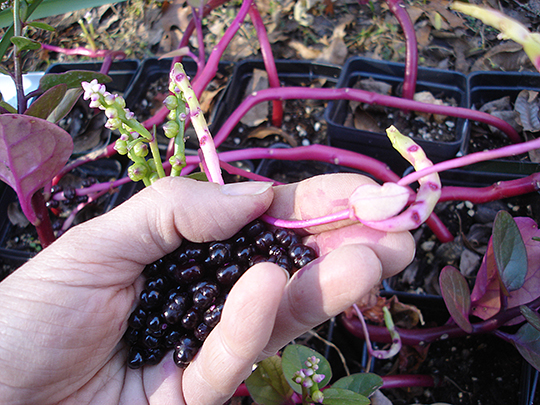
The plant needs well-drained soil that is rich in organic matter and retains moisture. It prefers sandy loam, but can tolerate relatively poor soil with a pH level of between 4,3 and 7. It is fairly resistant to pests and disease.
The fast-growing plant is ready to harvest between four to six weeks and will yield up to 40 kg of leaves from a ten-metre square bed over 75 days. The leaves that are picked from the vine must be eaten on the same day.
Contact details:
Jurie van der Walt at jurievdw@mweb.co.za. His books are freely available on request. The history of food and why we eat it (2020), and We need to revive the ancient indigenous food crops of Africa (2021).
Additional resource: AbukutsaOnyango, M. (2007) Response of slender leaf (Crotalaria brevidens Benth) to inorganic nitrogen application. African Journal of Food Agriculture Nutrition and Development, Vol. 7, No. 3, 2007 Available at: https://www.hindawi.com/journals/ija/2020/2710907/

